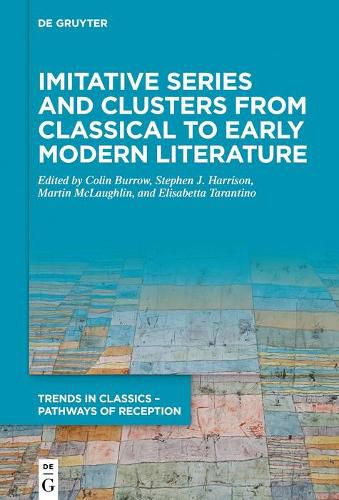Readings Newsletter
Become a Readings Member to make your shopping experience even easier.
Sign in or sign up for free!
You’re not far away from qualifying for FREE standard shipping within Australia
You’ve qualified for FREE standard shipping within Australia
The cart is loading…






This title is printed to order. This book may have been self-published. If so, we cannot guarantee the quality of the content. In the main most books will have gone through the editing process however some may not. We therefore suggest that you be aware of this before ordering this book. If in doubt check either the author or publisher’s details as we are unable to accept any returns unless they are faulty. Please contact us if you have any questions.
This volume shows the pervasiveness over a millennium and a half of the little-studied phenomenon of multi-tier intertextuality, whether as ‘linear’ window reference - where author C simultaneously imitates or alludes to a text by author A and its imitation by author B - or as multi-directional imitative clusters.
It begins with essays on classical literature from Homer to the high Roman empire, where the feature first becomes prominent; then comes late antiquity, a lively area of research at present; and, after a series of essays on European neo-Latin literature from Petrarch to 1600, another area where developments are moving rapidly, the volume concludes with early modern vernacular literatures (Italian, French, Portuguese and English). Most papers concern verse, but prose is not ignored. The introduction to the volume discusses the relevant methodological issues. An Afterword outlines the critical history of ‘window reference’ and includes a short essay by Professor Richard Thomas, of Harvard University, who coined the term in the 1980s.
$9.00 standard shipping within Australia
FREE standard shipping within Australia for orders over $100.00
Express & International shipping calculated at checkout
This title is printed to order. This book may have been self-published. If so, we cannot guarantee the quality of the content. In the main most books will have gone through the editing process however some may not. We therefore suggest that you be aware of this before ordering this book. If in doubt check either the author or publisher’s details as we are unable to accept any returns unless they are faulty. Please contact us if you have any questions.
This volume shows the pervasiveness over a millennium and a half of the little-studied phenomenon of multi-tier intertextuality, whether as ‘linear’ window reference - where author C simultaneously imitates or alludes to a text by author A and its imitation by author B - or as multi-directional imitative clusters.
It begins with essays on classical literature from Homer to the high Roman empire, where the feature first becomes prominent; then comes late antiquity, a lively area of research at present; and, after a series of essays on European neo-Latin literature from Petrarch to 1600, another area where developments are moving rapidly, the volume concludes with early modern vernacular literatures (Italian, French, Portuguese and English). Most papers concern verse, but prose is not ignored. The introduction to the volume discusses the relevant methodological issues. An Afterword outlines the critical history of ‘window reference’ and includes a short essay by Professor Richard Thomas, of Harvard University, who coined the term in the 1980s.